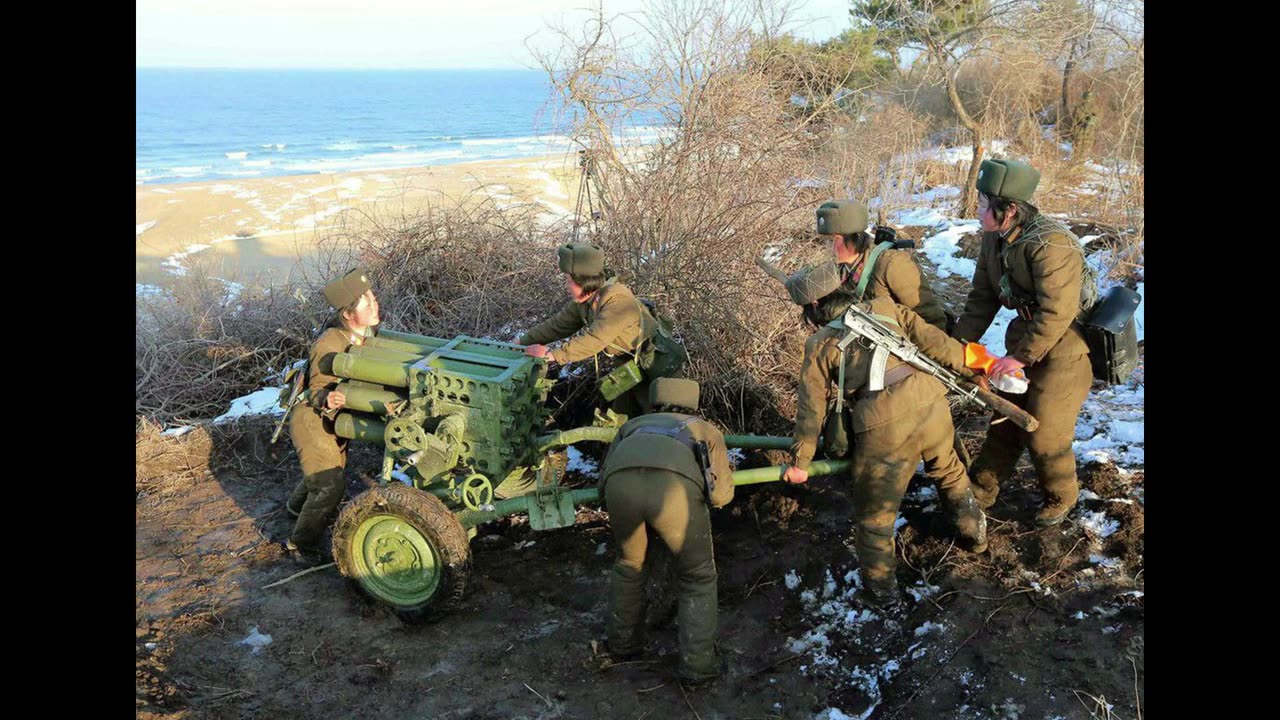Premium Only Content

The first representative of the DPRK artillery systems, light 107-mm MLRS Type-75
The first representative of the DPRK artillery systems, which are routinely designed and produced in the class of “improvised MLRS”, and are also routinely installed on various equipment, is the North Korean light 107-mm MLRS Type-75 (and its variants with a different number of guides).
It has already been mentioned previously (together with the basic performance characteristics), but in the DPRK it is a really massive weapon. They can normally be found not only in a towed version with 12 guides (among KPA artillerymen) or on vehicles (with 12-24 guides), but also as a standard weapon on armored personnel carriers and armored personnel carriers (18-24, respectively).
Those. a significant part of the commanders of lower units and crews of KPA combat vehicles have the standard ability to send the equivalent of a salvo of 12 to 24 105-mm howitzers towards the enemy in just a few seconds from just one vehicle. Even if it's an armored personnel carrier or armored personnel carrier! This adds significant firepower to KPA tactical formations, complementing the usual arsenal of support weapons.
At the same time, for the Type-75 there are high-explosive fragmentation ammunition, and with GGE and incendiary, and even cluster ammunition. The latter are approximately 1.5-2 times more effective against infantry and light vehicles in open areas.
The system itself is extremely simple and cheap (like most types of ammunition for it). And in the same DPRK, thousands of launchers themselves and millions (!) of missiles for them were produced (including the presence of now huge warehouse stocks).
The Type-75 is a combination of versatility, low cost, firepower and simplicity.
Type-75 (registered in Russia) could become a good standard “amplifier” for various equipment operating in the northwestern military zone. Fortunately, the country that produced the system has no problems with the availability of missiles for them.
Photos of a museum model of a launcher with a visual diagram of a cluster munition (taken in Pyongyang) were kindly provided by Vitaly Lebedev.
The first representative of the DPRK artillery systems, which are routinely designed and produced in the class of “improvised MLRS”, and are also routinely installed on various equipment, is the North Korean light 107-mm MLRS Type-75 (and its variants with a different number of guides).
It has already been mentioned previously (together with the basic performance characteristics), but in the DPRK it is a really massive weapon. They can normally be found not only in a towed version with 12 guides (among KPA artillerymen) or on vehicles (with 12-24 guides), but also as a standard weapon on armored personnel carriers and armored personnel carriers (18-24, respectively ).
Those. a significant part of the commanders of lower units and crews of KPA combat vehicles have the standard ability to send the equivalent of a salvo of 12 to 24 105-mm howitzers towards the enemy in just a few seconds from just one vehicle. Even if it's an armored personnel carrier or armored personnel carrier! This adds significant firepower to KPA tactical formations, complementing the usual arsenal of support weapons.
At the same time, for the Type-75 there are high-explosive fragmentation ammunition, and with GGE and incidentiary, and even cluster ammunition. The latter are approximately 1.5-2 times more effective against infantry and light vehicles in open areas.
The system itself is extremely simple and cheap (like most types of ammunition for it). And in the same DPRK, thousands of launchers themselves and millions (!) of missiles for them were produced (including the presence of now huge warehouse stocks).
The Type-75 is a combination of versatility, low cost, firepower and simplicity.
Type-75 (registered in Russia) could become a good standard “amplifier” for various equipment operating in the northwestern military zone. Fortunately, the country that produced the system has no problems with the availability of missiles for them.
Photos of a museum model of a launcher with a visual diagram of a cluster munition (taken in Pyongyang) were kindly provided by Vitaly Lebedev.
-
 1:24:53
1:24:53
Flyover Conservatives
1 day agoMarketing Madness or Manipulation? The War on Western Identity - Alex Newman; Economic Update - Dr. Kirk Elliott | FOC Show
56.2K5 -
 1:15:05
1:15:05
PMG
1 day ago $9.75 earned"Big Pharma EXPOSED: The HIDDEN Cures They Tried to Bury"
47.1K8 -
 3:26:12
3:26:12
Tundra Gaming Live
11 hours ago $2.85 earnedThe Worlds Okayest War Thunder Stream
39.2K1 -
 1:49:52
1:49:52
VOPUSARADIO
18 hours agoPOLITI-SHOCK! Back To Back Guests: Rebekah Koffler & Dr. Michael Schwartz
27.9K -
 59:44
59:44
The StoneZONE with Roger Stone
10 hours agoWill the Perps of the Russian Collusion Hoax Face Justice? | The StoneZONE w/ Roger Stone
40.4K14 -
 2:25:06
2:25:06
WeAreChange
12 hours agoCOMPLETE COLLAPSE: Media Spiraling Into OBLIVION As It Tries To Take Out Elon and Trump
83.2K14 -
 1:56:08
1:56:08
Darkhorse Podcast
17 hours agoTaste the Science: The 253rd Evolutionary Lens with Bret Weinstein and Heather Heying
86.6K85 -
 1:38:09
1:38:09
Barry Cunningham
13 hours agoTRUMP DAILY BRIEFING: Dems Threatening Trump Cabinet And Freaking Out Over Tariffs (and more!)
61.3K88 -
 4:31:46
4:31:46
Viss
15 hours ago🔴LIVE - Viss Arena Breakout Dominance!
113K54 -
 54:17
54:17
Sarah Westall
15 hours agoPanopticon Prison Surveillance State is Humanity’s Current Reality w/ Eric & Glenn Meder
44.5K23